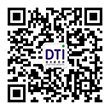Process for CPC certification of children's products exported to the United Stat
Date:2025-07-10 10:48:33 Classification
:【question】 Visits:
The CPC certification process and key requirements for children's products exported to the United States,
I. CPC certification definition and scope of application
1. Certification nature
CPC (Children's Product Certificate) is a children's product safety certificate required by the US CPSC (Consumer Product Safety Commission). It must be issued by the manufacturer or importer, stating that the product complies with all applicable safety standards.
2. Applicable products
Applicable to products that are mainly used by children aged 12 and under, such as toys, clothing, baby products, school supplies, etc.
II. Processing process
1. Preliminary preparation
- Confirm the product type: clarify whether the product is a children's product (such as toys must comply with ASTM F963 standards, and clothing must meet the combustion performance requirements).
- Select a testing agency: entrust a CPSC-approved laboratory to conduct testing.
2. Sample testing
- Test items:
- Physical and mechanical properties: small parts, sharp edges, structural strength, etc.
- Chemical testing: total lead, phthalates, heavy metal migration, etc. (according to CPSIA regulations).
- Combustion performance: Textiles, carpets, etc. must comply with 16 CFR Part 1610 standards.
- Testing cycle: 5-7 working days, the cost depends on the material and test items.
3. Report and certificate
- Test report: The laboratory issues an English version of the test report, which must include product information, test standards, results, etc.
- Sign CPC certificate: Based on the report content, fill in the certificate template, including:
- Product information (name, model, use);
- Manufacturer/importer information (name, address, contact information);
- Testing laboratory information and date.
4. Submission and maintenance
- E-commerce platform requirements: Amazon and other platforms must upload CPC certificates, otherwise the product cannot be listed.
- Update requirements: If the product design or material changes, retesting and updating the certificate are required.
III. Key considerations
1. Compliance requirements
- Products must comply with all applicable CPSC standards (such as ASTM F963, 16 CFR Part 1500, etc.).
- Restricted substances such as short-chain chlorinated paraffins (SCCP) are prohibited.
2. Market inspection risks
- U.S. Customs or CPSC may conduct random inspections on imported products, and if non-compliant, they will face returns, fines or recalls.
3. Exemptions
- Some products (such as children's books) may be exempted from some tests if they do not contain chemical or physical risks, but a compliance statement is still required.
For a complete list of test items or specific standard documents, please refer to other sources. It is recommended to communicate with the testing agency in advance to ensure efficient and compliant processes.




 Shen Gongwang Security: 44030602006947
Shen Gongwang Security: 44030602006947